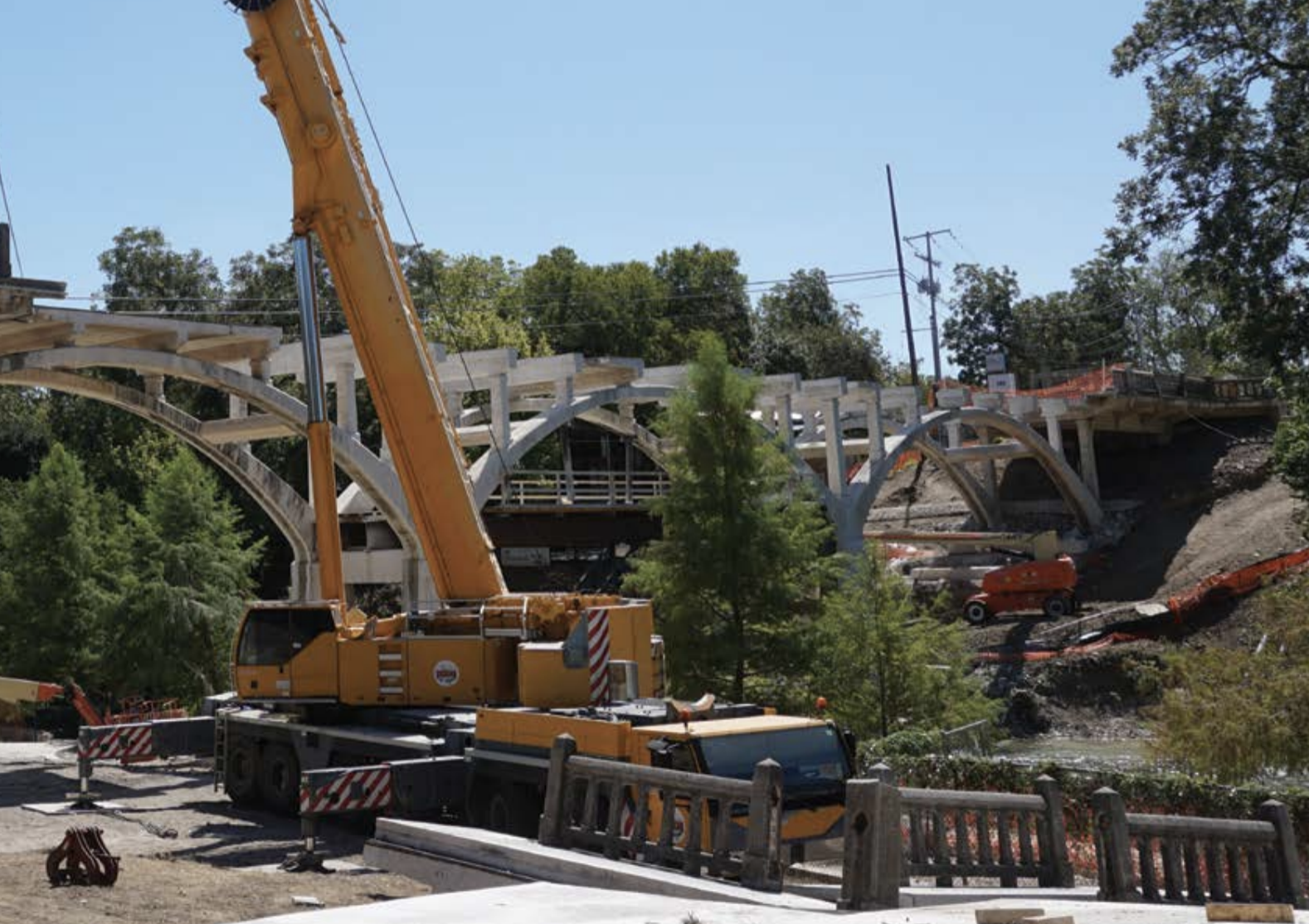
CSDA Contractor Assists in Planning & Engineering Demolition of Arlington Memorial Bridge
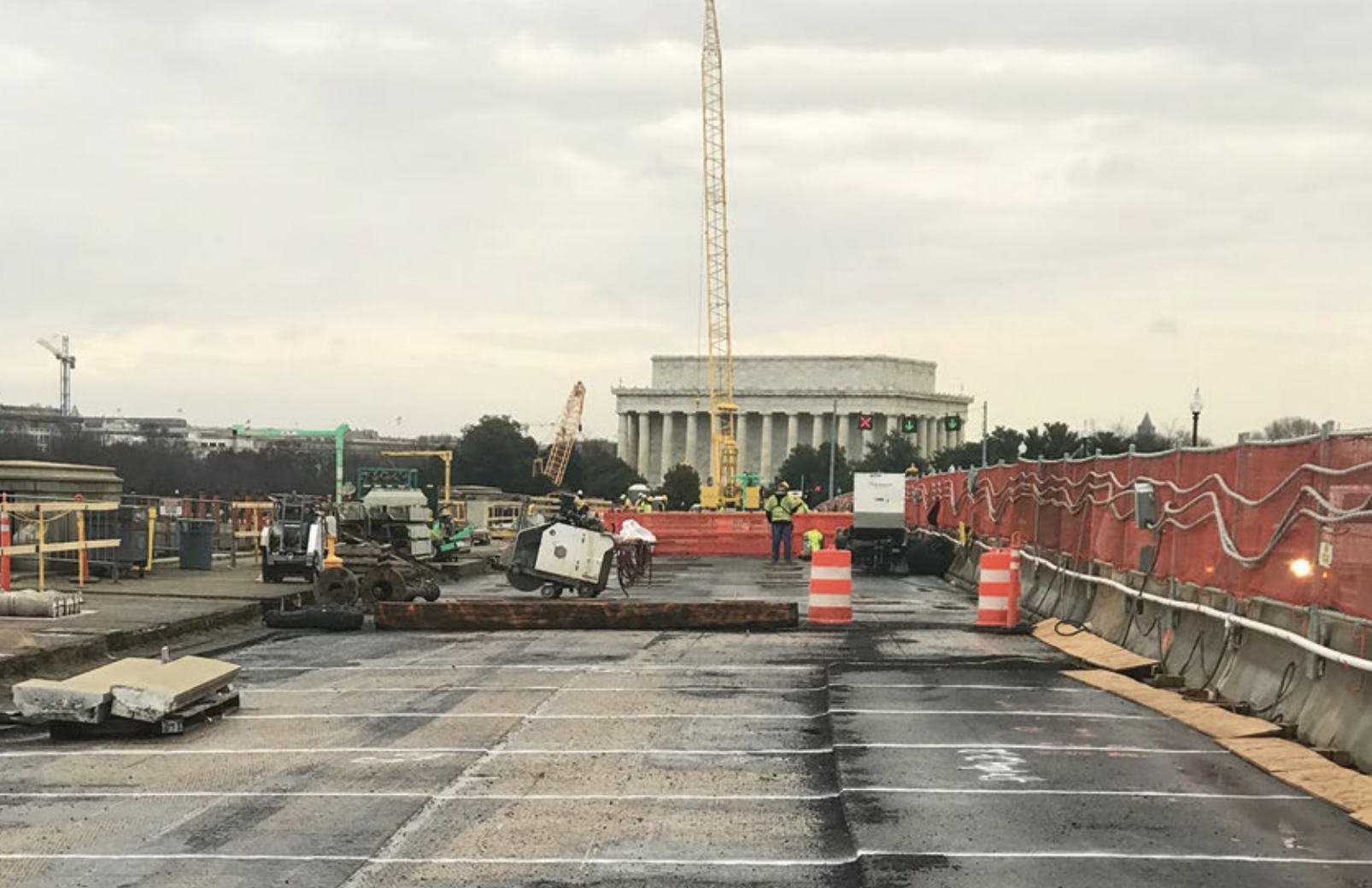
Running across the Potomac River from the Lincoln Memorial to Arlington National Cemetery, the Arlington Memorial Bridge is one of six bridges that connects Virginia with the District of Columbia. Opened in 1932, the Arlington Memorial Bridge connects, in a direct line, the Lincoln Memorial and the Civil War General Robert E. Lee’s home, Arlington House, to the hill overlooking Arlington National Cemetery. This linkage symbolizes the re-joining of the north and the south after the Civil War.
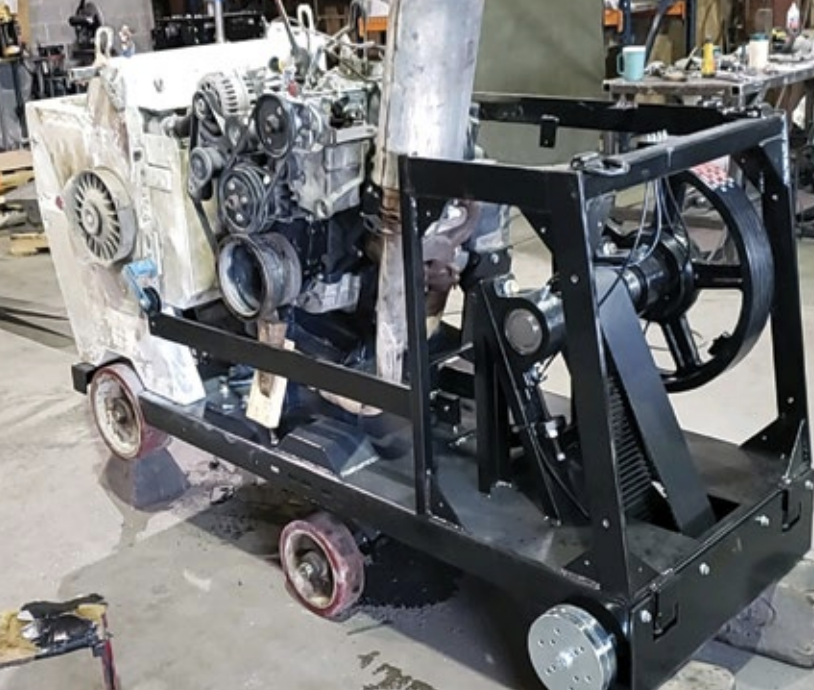
For the past six years, the National Park Service (NPS) has been making temporary repairs to the bridge while preparing for a full rehabilitation. In February 2016, the Federal Highway Administration (FHWA) informed the NPS that despite the emergency repairs, the accelerated deterioration of the concrete road deck would require a complete bridge closure in 2021. Therefore, a complete rehab of the 90-year old bridge would need to happen before that time.
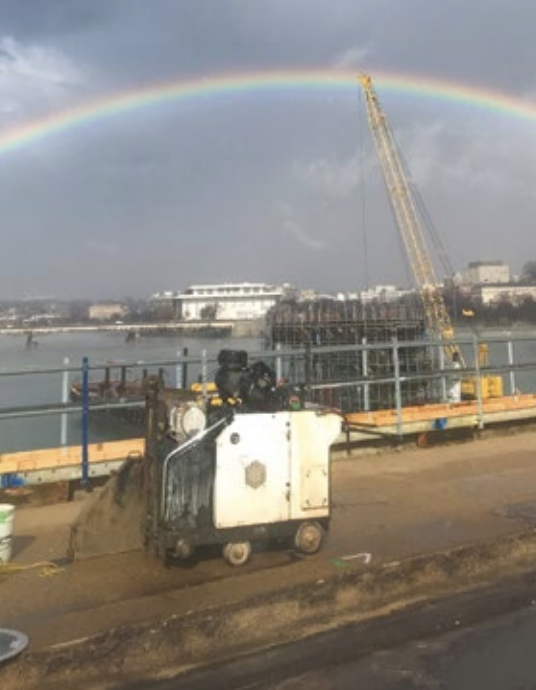
With over 68,000 drivers crossing the bridge daily from Virginia, Washington, D.C, Maryland, and other locations, a plan of action was needed immediately. The NPS developed a rehabilitation project that would restore the bridge’s structural integrity while preserving its memorial character and signature design elements. Due to the bridge being a vital part of Washington and Virginia’s transportation system, a complete closure during rehab was impossible. Instead, the work would be done in phases.
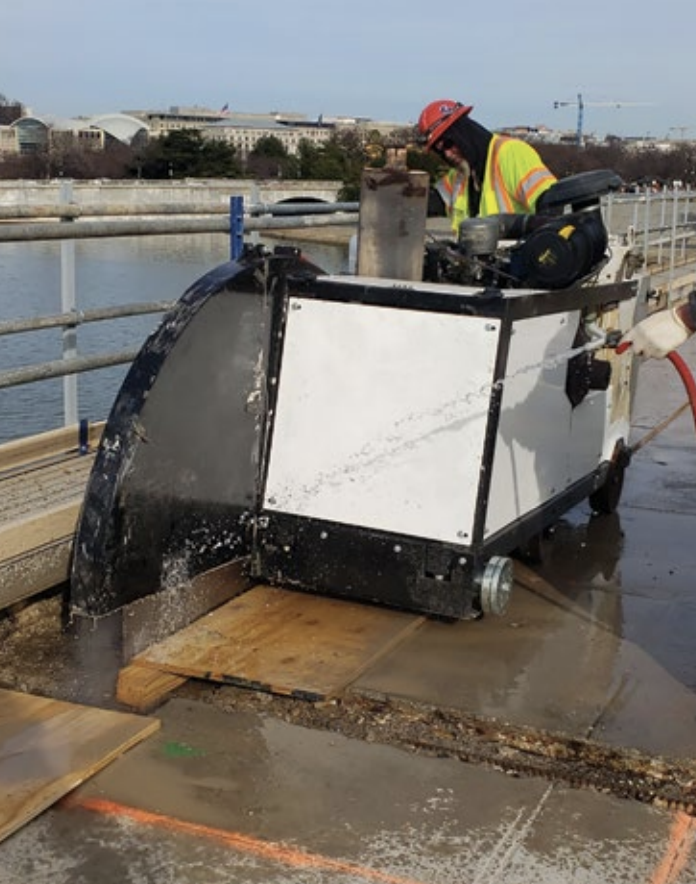
Altogether, rehabilitation would include replacing the drawbridge span, rehabilitating the concrete approach spans and replacing the concrete deck. CSDA contractor Concrete Technology Services Mid-Atlantic, Inc. (CTS) was hired to assist in planning and engineering the demolition plan for the existing deck. To do this, they would saw cut the bridge deck sections in a manner that would allow the General Contractor, Kiewit Infrastructure Co., to lift the cut deck pieces when the schedule allowed.
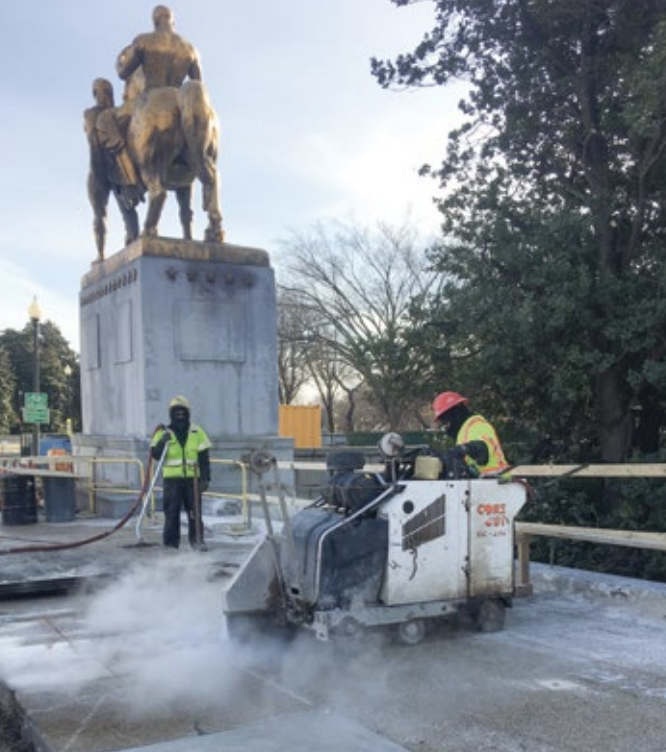
CTS engineered a plan that required wall sawing the existing bridge deck in two phases. As part of this plan, they determined they needed a 72” blade to saw cut a thickened portion of slab and beam structure that originally was planned to wire saw. CTS contacted Diamond Products to help them design and fabricate a slab saw that would accommodate a blade of this size. Diamond Products modified a CTS owned V6 slab saw that could hold the 72″ blades capable of cutting 32″ deep. This new system saved both CTS and Kiewit a lot of money and time.
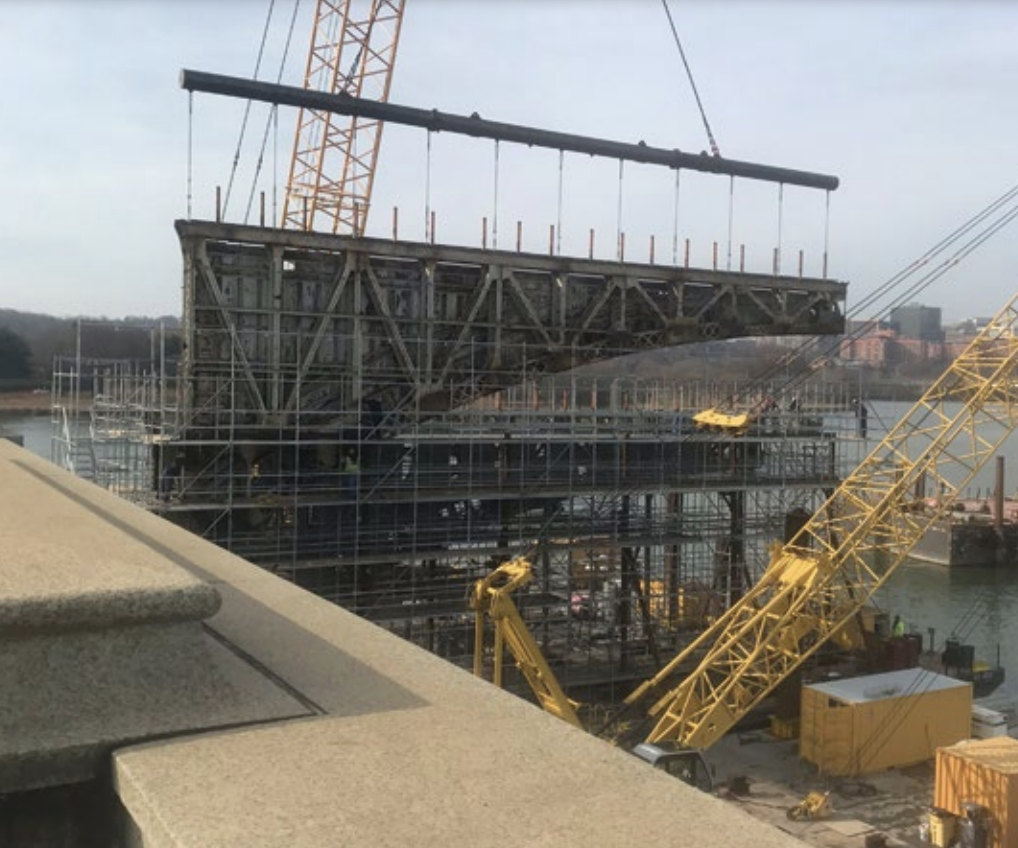
Starting in August of 2019, the first phase of this job was to cut the walls along the arch, which ranged in height from 36” to 18’ high, using Pentruder and Husqvarna wall saws. CTS cut the 24″ thick walls horizontally on the slab deck’s underside on each of the nine arch sections. Then, they slab sawed the deck into 8′ by 8′ by 15″ sections using six Diamond Products 7574 slab saws and the custom-built Diamond Products V6 slab saw. With Kiewit’s help, after CTS slab sawed over the pier sections, steel beams were installed to hold the cut section from falling 20′ below. Existing beams and piper frames were wire saw cut into numerous cut sections to be removed by Kiewit. Altogether there were eight pier sections and four abutments each phase. For new drainage piping throughout each arch section, CTS core drilled 12″ diameter holes using Hilti DD250 core drills over the existing sleeves. This allowed for the removal of old sleeves to make way for larger piping. Lastly, CTS used wire saws to cut the 20′ high by 24″ thick walls at the bascule walls for full height removal. A variety of wire saws were used for these cuts including: a Hilti DSW 3018-E, the WS50 and CC110 track wire saws from Diamond Products, a Husqvarna CS10 and a Pentruder wire saw.
To meet the aggressive schedule, CTS cut one side of the wall while traffic continued to flow on the roadway, just 18” above, prior to the bridge’s planned shutdown. This allowed for 50 percent of the wall saw cutting to be completed before the planned work schedule was realized. In return, the process allowed for CTS to expedite the accelerated schedule.
CTS and Kiewit’s method versus conventional demolition with large excavators and hydraulic hammers created the least noise pollution, dust and debris. This technique was not only the fastest process for demolishing existing structures, but it was the most environmentally-conscious.
There were several challenges faced by the CTS team on this job. Besides the pressure of working on a national historic structure, the crew also had to deal with below freezing temperatures, frozen water lines, limited access to work areas, working with harnesses on the scaffolding provided by the GC, climbing ladders to access the work zone and finally, safely maneuvering a 72” diamond blade.
In total, CTS slab sawed over 3,500 linear feet at 32″ deep, 20,000 linear feet at 12″ to 15″ deep, over 15,000 linear feet of 24″ deep of wall saw cuts, 200 wire saw cuts through concrete frames measuring 4 square feet each, 200 wire saw cuts through beams measuring 12 square feet each and thousands of core drill holes for piping, MOT LUCS signage and lifting holes. All scope of work was accomplished with CTS working over 20,000 man hours without any loss time or other safety incidents.
Ron Salera, CTS General Manager, admits, “This project was one of the most challenging projects I have ever experienced in my 37-year career. Although there were many obstacles, the project had many details that everyone involved can be proud of. During the second phase, CTS mobilized a team of 28 personnel to the project out of our D.C. branch while simultaneously completing the largest demolition project within the D.C. market. The project finished at $3.1 million while we were operational on a $17 million project during same time frame. The team completed an unbelievable amount of work in a short time. The finished project is simply amazing, and for that alone, it was a complete success.” He continued “CTS feels we were selected because we were involved from the beginning of the planning process and offered solutions for our scope work. We had enough personnel and equipment to meet the schedule and budget constraints. While we were not lowest price, we were awarded project because of our knowledge of project needs and our commitment to meet the demands of the GC.”
CTS was involved in the rehabilitation of the bridge from the very beginning of the planning process until the successful conclusion of the demolition and removal phase in June of 2020. Their reputation, creativity and professionalism were the reason they were chosen for this project, and why is was such a success. CSDA contractors are routinely successful for all of these reasons, and CTS expects to see additional work because of their work on this job.
Company Profile
Concrete Technology Services Mid-Atlantic, Inc. is a concrete cutting contractor that was founded on the principle that planning, proper equipment, trained personnel and the highest level of expectations make it possible to achieve anything in the construction industry. They maintain that mindset today, 33 years later. CTS is headquartered in Glenn Dale, Maryland, operates 25 service trucks with 90 total employees. Besides concrete cutting and structural demolition, they offer GPR scanning and X-Ray services.












